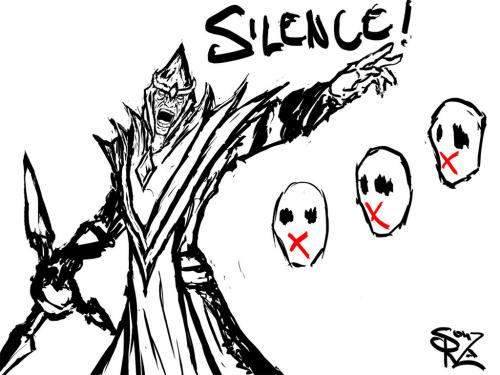
Image Credit:
I owe particular thanks for this post to Beck Wise, who gave me the this idea in the first place. This post is also in part a response to Sarah Riddick, who posted to Blogging Pedagogy recently about maintaining a safe space for students to articulate viewpoints with which they disagree.This latter concern reminded me of a more basic problem that I and many other instructors have faced: the reticent class that is, for whatever reasons, unwilling to articulate much of anything at all.
Because teachers tend to be voluble sorts and problem solvers by nature or nurture, we tend to take long silences personally, often suspecting that they represent indifference or hostility on the students' part. We then “solve” this problem through a variety of measures designed to get the class talking: prewriting activities, calling on students directly, or, worst of all, from my perspective, chattering on endlessly ourselves, hopeful that our next sentence will be the magic bullet that invites response, until we are all mercifully saved by the bell.
That my motive attributions are probably wrong is fairly obvious. Students remain silent for a huge variety of reasons that probably have nothing to do with me or my class: personal preoccupations, honest shyness, developing language skills, cultural aversions to drawing attention to themselves, fear of peer disapproval, and the feeling that they just don't know enough or haven't concretized their thoughts enough to make them public.
But the second part—the solutions—may in fact overlook a more pragmatic approach: perhaps the problem isn't silence specifically but lack of communication generally. The question then becomes: how can we communicate as a group without speech? How can we address the impediments to communication in a broader sense, while still maintaining a sense of real-time discussion?
I found a remarkably easy answer in the concept of anonymous, collaborative documents such as Google Docs with open-invite participation policies. It works like this: I build either a totally blank doc or one with specific questions or instructions for the topic under discussion, put it up on the projector screen, and let students write their contributions in a real-time, collaborative exchange. Since the invite is open and requires no Google login, students are represented by anonymous animal (e.g. “Anonymous Antelope”) icons as they participate. The icon follows around their cursor as they respond to various other student comments, creating a visual map of student responses as they literally “move” from one topic to another.
Anonymity can be tricky, of course, and sometimes it seems that the entire internet and its oft-noted incivility testifies to that. But the fact that the students are in the same room with one another seems to exercise a check on rudeness and cheek that posting from home in asynchronous forums does not. At least, it hasn't been a problem so far into this fairly new experience. One principal benefit is that I may compliment a particular contribution and then have the student verbally claim ownership of it.
As such, these silent and anonymous conversations can often drift back and forth into hybrid spoken-written affairs, and managing them is more art than science so far. But what I think that they do is take some of the best qualities of the MOOC without the worst, i.e. huge class sizes and a tenuous access to the course instructor and the particular expertise she or he brings to the table. Also, challenges remain for students with basic or developing written language proficiency, who may be as hesitant to write as they are to speak. But the technique in general promotes group conversations that avoid many of the traditional obstacles and workarounds that occur in the absence of computer mediation.

